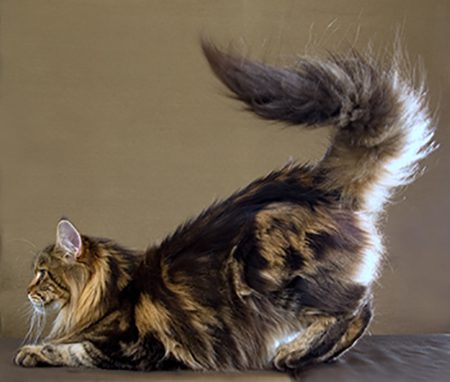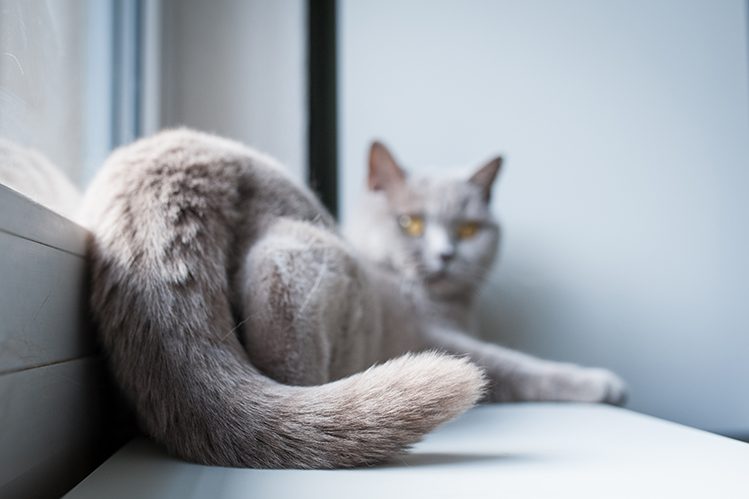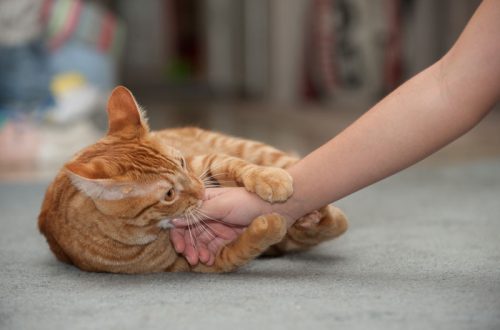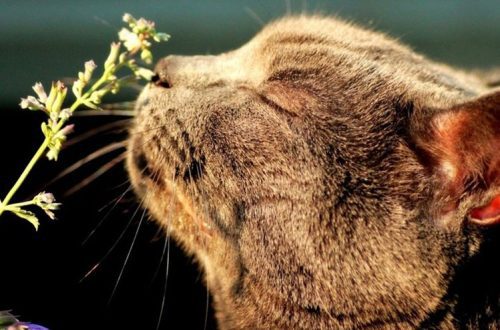
Зашто мачка има реп?
Have you ever wondered why a cat needs a tail? If everything is clear with paws, ears and other parts of the body, then the purpose of the tail made many people break their heads. We will talk about the most common versions in our article.
For a long time it was believed that the tail is a balancing tool, thanks to which cats are so graceful, agile and so accurate in their calculations. Indeed, the ability to accurately calculate the distance of the jump, turn around at the moment of the fall and deftly walk along the thinnest branch is admirable, but what role does the tail play in it? If balance depended on him, would tailless cats retain their agility?
As practice shows, a tailless Manx cat, for example, knows the art of balancing no worse than a Bengal. Also, stray cats that have lost their tail in yard fights and under other circumstances, after an injury, do not become less dexterous and less adapted to survival.
Most likely, the long tail helps the cat to maintain balance in sharp turns. But, in general, having observed naturally tailless cats and their compatriots who have lost their tail during their lives, we can conclude that a tail is generally not necessary for balancing. At least, not to the extent that only this meaning can be attributed to it.

Gordon Robinson, MD and head of surgery at a renowned New York veterinary clinic, noted that it is incorrect to define the tail as a balancing organ. Otherwise, this conclusion would have to be extended to dogs. But most hunting dogs, considered models of agility and balance, have docked tails, and they have no problems because of this.
Returning to tailless cats, we note that some scientists (for example, Michael Fox – a leading specialist in animal behavior) believe that the absence of a tail is a stable mutation that borders on extinction, and note a higher mortality among tailless kittens. Susan Naffer, a Manx cat breeder, takes a different view. The absence of a tail, according to her, does not affect the quality of life of cats and their offspring in any way: neither in the ability to keep a balance, nor in the level of survival, nor in everything else. In a word, taillessness is one of the varieties of the norm, which in no way prevents animals from living and communicating. And now more about communication!
A more common version of the purpose of the tail is that the tail is the most important element of communication, a means of self-expression. The manipulations that the cat does with its tail are designed to notify others about its mood. A certain state of the tail demonstrates a good disposition or, on the contrary, a bad mood, tension and a readiness to attack.
Probably every owner of a tailed cat will agree with this statement. From time to time, we follow the movements of the pet’s tail even on an intuitive level and, based on our observations, we conclude whether it is worth taking the ward in our arms now.
But if the tail is a communication tool, then what about tailless cats? Do they have communication problems? Rest assured: no.
Michael Fox, already mentioned above, believes that the signal repertoire of tailless cats is significantly limited compared to their tailed relatives, but in the course of their existence, tailless cats were able to compensate for the absence of a tail by other means of self-expression. Fortunately, the tail is not the only communication tool. There is also a “voice” with a huge range of sounds, and movements of the head, paws, ears and even whiskers. In a word, it is not difficult to read the messages of a pet, even if it does not have a tail at all.
The main thing is attention!






